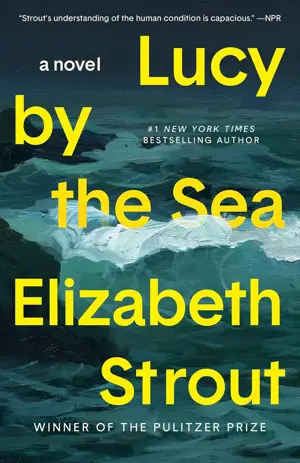Lucy By the Sea

Lucy's inner dialogue touches on many truths from its time. Here's one standout line:
And then this thought went through my mind: We are all in lockdown, all the time. We just don’t know it, that’s all. But we do the best we can. Most of us are just trying to get through.
Lucy Barton
Or this remarkable passage of really being Lucy by the sea, which reminded me so much of summer vacations in Hancock Point, Maine, when I was young, and how the relation of water and sky colors I can often relate to when looking out over Victoria Harbour with one profound difference: the tides. The immensity of the scale of the city's architecture and the depth of the harbor with no visable shoreline mean that only the fishermen right at the edge of the walkway that runs parallel to the harbor likely know when the tide is high. In Maine the receding tide meant food for scavenging gulls would become visible and easily had. The seaweed would drape itself along the rocky shelves of black volcanic rock, where it formed pools with trapped shellfish, crabs and—albeit rarely—a sea urchin.
“I got to know the tides: I mean I got to understand when they went out and came back in, and they comforted me. I would watch the swirling water as the tide came in, lapping it’s white swirl again and again upon the darken rocks below us, and also against those two islands in front of us, and I would watch on days when the ocean seemed almost— briefly— flat, and I would watch the tide go out, leaving the wet rocks and choppy yellowish seaweed. When I looked straight ahead there was nothing on the horizon past those two small islands, that is how far out the ocean went. I noticed how the sky tended to match the ocean; if the sky was gray— as it frequently was—the ocean seemed gray too, but when the sky was bright blue, the ocean seemed a blue color, or sometimes a deep green if there were clouds and sun. The ocean was a huge comfort to me somehow, and those two islands were always there. The sadness that rose and fell in me was like the tides”.
Lucy By the Sea
Thus far there are three novels about Lucy Barton: My Name is Lucy Barton, Anything is Possible, and